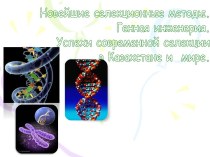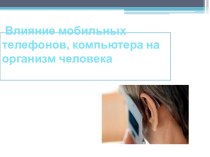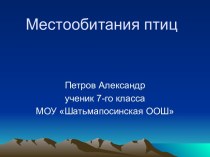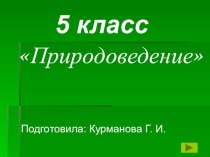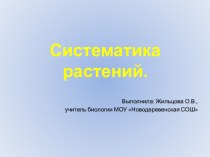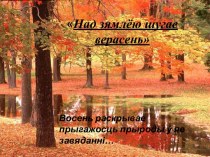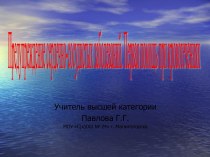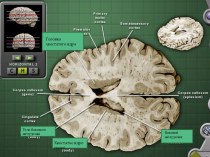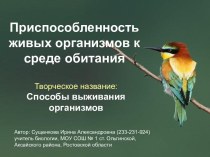- Главная
- Разное
- Бизнес и предпринимательство
- Образование
- Развлечения
- Государство
- Спорт
- Графика
- Культурология
- Еда и кулинария
- Лингвистика
- Религиоведение
- Черчение
- Физкультура
- ИЗО
- Психология
- Социология
- Английский язык
- Астрономия
- Алгебра
- Биология
- География
- Геометрия
- Детские презентации
- Информатика
- История
- Литература
- Маркетинг
- Математика
- Медицина
- Менеджмент
- Музыка
- МХК
- Немецкий язык
- ОБЖ
- Обществознание
- Окружающий мир
- Педагогика
- Русский язык
- Технология
- Физика
- Философия
- Химия
- Шаблоны, картинки для презентаций
- Экология
- Экономика
- Юриспруденция
Что такое findslide.org?
FindSlide.org - это сайт презентаций, докладов, шаблонов в формате PowerPoint.
Обратная связь
Email: Нажмите что бы посмотреть
Презентация на тему Circulatory system
Содержание
- 2. HUMAN CIRCULATORY SYSTEM
- 4. The Human Circulatory SystemIt consists of:HEARTBLOOD VESSELSBLOOD
- 6. The human circulatory system functions like a network of highways. It transports materials around the body.
- 7. IT TRANSPORTS: Oxygen and Carbon dioxideDigested and
- 8. Functions of human circulatory systemIt plays an
- 9. HEART FACTS:About 250-340 grams,In your life time,
- 10. Main structure of the heartThe heart is
- 11. External StructureGO TO VIDEO
- 12. Internal StructureGO TO VIDEO
- 15. Internal Structure Of The HeartThe heart consists
- 16. VALVES
- 17. Semilunar ValvesSemilunar valves are found between the
- 21. The heart pumps blood into the body.
- 24. Heart beating 3D video
- 25. Heartbeat is controlled by autonomic nervous system.
- 27. Heart RateParasympathetic nerves reduces the heart rate.Sympathetic
- 28. BLOOD VESSELSThere are 3 types of vessels in our body.These are;ARTERIESVEINSCAPILLARIES`
- 30. Blood vessels(photograph)
- 32. 1. ArteriesArteries carry blood away from heart
- 33. 2. VeinsTheir walls are much thinner than
- 35. 3. CapillariesCapillary walls are only one cell
- 38. arteryveinarteriolevenulecapillary
- 39. Blood PressureBlood exerts pressure on the walls
- 40. Measuring Blood Pressure
- 43. Blood CirculationThere two types of circulation in
- 44. Pulmonary circulationSystemic circulation
- 46. Blood MovementLeft ventricle pumps oxygenated blood to
- 48. BLOODBlood is a type of tissue that
- 49. FUNCTIONS OF BLOODTransport of materialsHormone transportHomeostasisImmune responseBlood Clotting
- 50. BLOOD COMPONENTSBlood contain 2 main parts. These are:Blood PlasmaBlood cells
- 51. Blood Plasma Plasma is liquid part of
- 53. Blood CellsThere are three types of blood cells:Erythrocytes (=Red Blood Cells)Leucocytes (=White Blood Cells)Thrombocytes (=Platelets)
- 55. There are approximately 5 to 5,5 million
- 56. Mammalian erythrocytes have no nucleus at adult
- 60. HEMOGLOBINErythrocytes are filled with hemoglobin. Hemoglobin is
- 63. LEUCOCYTESLeucocytes protect the body from infections. They
- 64. Normally there are only 6000 to 8000
- 67. PLATELETSPlatelets are produced by bone marrow.They play
- 68. THE MECHANISM OF BLOOD CLOTTINGProthrombin (In liver)Vitamin KThrombogenThrombocytes + O2ThrombokinaseThrombinFibrinogen Ca ionsPlatelets + FibrinCloth
- 71. Diseases related to circulatory systemAnemiaLeukemiaArteriosclerosis
- 72. Anemia
- 73. Arteriosclerosis When blood vessels become narrow and
- 74. Heart attack
- 75. STROKE
- 76. TRUE or FALSEOpen circulatory system is a
- 77. Hemoglobin is carbohydrateFALSEThe right sides of the
- 78. Fill in the blanks ………... Is placed
- 79. Cardiovascular system Duration 3 week
- 80. LEARNING OBJECTIVES OF THE CARDIOVASCULAR SYSTEM AFTER
- 81. Скачать презентацию
- 82. Похожие презентации
HUMAN CIRCULATORY SYSTEM





































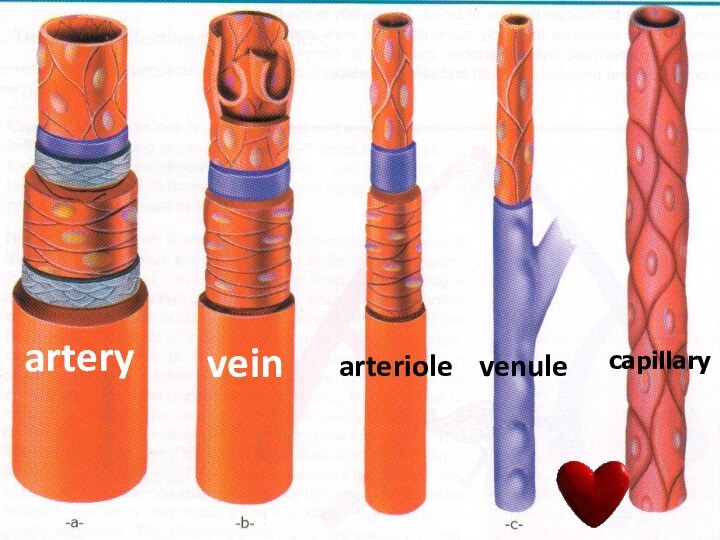
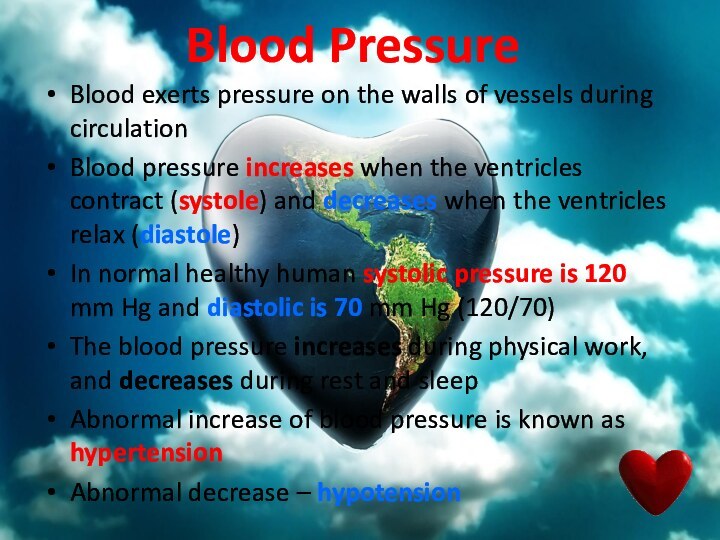















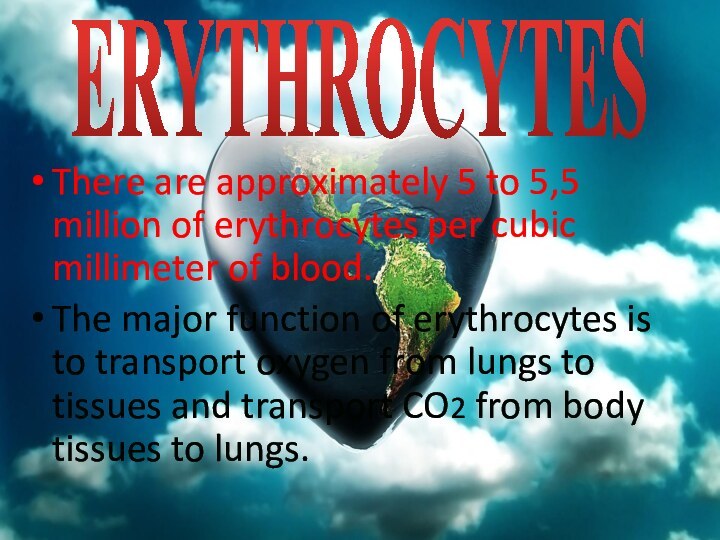


























Слайд 6 The human circulatory system functions like a network
of highways. It transports materials around the body.
Слайд 7
IT TRANSPORTS:
Oxygen and Carbon dioxide
Digested and absorbed
food or nutrients
Hormones, vitamins and minerals
Wastes: urea and
other metabolic productsHeat
Immunity agents: immune cells and antibodies
Functions of human circulatory system
Слайд 8
Functions of human circulatory system
It plays an important
role in gas exchange
Supply body cells with nutrients,
minerals and vitaminsRemove toxic wastes away from the cells
Regulates body’s temperature
Fight antigens(Ex: Viruses)
Слайд 9
HEART FACTS:
About 250-340 grams,
In your life time, pumps
about 300 million liter of blood,
It contracts about
2.5 billion times.
Слайд 10
Main structure of the heart
The heart is made
of a special type of muscle called cardiac muscle
which contracts and relaxes rhythmically for a lifetime.The heart is located in the chest cavity and is surrounded by a membrane called the pericardium.
The blood vessels which supply food and oxygen to heart are called as coronary arteries.
Слайд 15
Internal Structure Of The Heart
The heart consists of
four chambers :
The two upper chambers = ATRIA
The two
lower chambers = VENTRICLESBetween atria and ventricle there are valves, preventing the blood coming back to the atria when the ventricles contract.
The valve on the left is BICUSPID VALVE
The valve on the right is TRICUSPID VALVE
The lub-dub heart sound is generated by valves.
Слайд 17
Semilunar Valves
Semilunar valves are found between the arteries
and the ventricles.
They prevent the blood entering the arteries
when the atria contract.Слайд 21 The heart pumps blood into the body.
Relaxation of heart is known as diastole.
Contraction of heart
is known as systole. Blood is pumped into the ventricles by atrial contraction, and blood is pumped into the vessels by ventricular contraction.
Cardiac activity
Слайд 25
Heartbeat is controlled by autonomic nervous system.
The
autonomic nervous system stimulates the sinoatrial node and atrioventricular
node for initiation of a contraction. The atria and ventricles contract as a result.SA node sends impulses to heart every 0.85 seconds
Control of HEART
Слайд 27
Heart Rate
Parasympathetic nerves reduces the heart rate.
Sympathetic nervs
speed up the heart rate.
Acetylcholine reduces the heart rate.
Adrenaline
speed up the heart rate.CO2 reduces the heart rate.
High temperature increases the heart rate.
Слайд 32
1. Arteries
Arteries carry blood away from heart to
the different tissues of the body.
Artery walls are stronger
and thicker and more elastic than the veins.The pulse is the rhythmic contraction and relaxation of arteries which are parallel to the contraction of the heart.
Branches of arteries are called as arteriole.
They carry mainly oxygenated blood
Слайд 33
2. Veins
Their walls are much thinner than the
walls of arteries.
Veins are farther from the heart
and exposed to lower pressures.Veins are larger in diameter than arteries.
Most veins have one-way valves. A valve is a flap of tissue that ensures blood passes through but does not flow backwards.
Branches of veins are called as venules
Veins mainly carry deoxygenated blood
Слайд 35
3. Capillaries
Capillary walls are only one cell thick.
Gas and nutrient molecules pass easily through their thin
walls.They are non-muscular in structure.
Capillaries connect arteries to the veins.
Слайд 39
Blood Pressure
Blood exerts pressure on the walls of
vessels during circulation
Blood pressure increases when the ventricles contract
(systole) and decreases when the ventricles relax (diastole)In normal healthy human systolic pressure is 120 mm Hg and diastolic is 70 mm Hg (120/70)
The blood pressure increases during physical work, and decreases during rest and sleep
Abnormal increase of blood pressure is known as hypertension
Abnormal decrease – hypotension
Слайд 43
Blood Circulation
There two types of circulation in human
body:
1. Pulmonary Circulation: Oxygen poor blood is pumped into
lungs. And oxygen rich one is brought back to the heart.2. Systemic Circulation: Oxygen rich blood is pumped into body parts. And contaminated blood is brought back to the lungs.
Слайд 46
Blood Movement
Left ventricle pumps oxygenated blood to body,
that’s why it’s walls are thicker
Right ventricle pumps deoxygenated
blood to lungsAll arteries except pulmonary artery carry oxygenated blood
All veins except pulmonary vein carry deoxygenated blood
Слайд 48
BLOOD
Blood is a type of tissue that formed
by mesoderm layer of embryo.
An adult Human body
has approximately 5,5 liters of blood.
Слайд 49
FUNCTIONS OF BLOOD
Transport of materials
Hormone transport
Homeostasis
Immune response
Blood Clotting
Слайд 51
Blood Plasma
Plasma is liquid part of blood.
It includes water (90%) and dissolved proteins. It also
contains salts, glucose, aminoacids, fatty acids, vitamins, hormones and cellular wastes.
Слайд 53
Blood Cells
There are three types of blood cells:
Erythrocytes
(=Red Blood Cells)
Leucocytes (=White Blood Cells)
Thrombocytes (=Platelets)
Слайд 55 There are approximately 5 to 5,5 million of
erythrocytes per cubic millimeter of blood.
The major function
of erythrocytes is to transport oxygen from lungs to tissues and transport CO2 from body tissues to lungs. ERYTHROCYTES
Слайд 56 Mammalian erythrocytes have no nucleus at adult (maturation)
stage.
They are produced by red bone marrow.
Erythrocytes live(!)
for 120 daysErythrocytes are broken down by Reticulo-Endothelial System in spleen, liver and lymph nodes.
Слайд 60
HEMOGLOBIN
Erythrocytes are filled with hemoglobin.
Hemoglobin is iron
(Fe) containing pigment.
It gives red color to blood.
Hemoglobin carries oxygen.Erythrocytes live(!) for 120 days
Слайд 63
LEUCOCYTES
Leucocytes protect the body from infections.
They are
produced by red bone marrow and lymph nodes.
They
can move through the tissue. Слайд 64 Normally there are only 6000 to 8000 leucocytes
per cubic millimeter of blood. When there is an
infection in the body, number of leucocytes may increase to 30000 per cubic millimeter.
Слайд 67
PLATELETS
Platelets are produced by bone marrow.
They play major
role in blood clotting.
Blood clotting is the solidification of
blood in order to stop bleeding.
Слайд 68
THE MECHANISM OF BLOOD CLOTTING
Prothrombin (In liver)
Vitamin K
Thrombogen
Thrombocytes
+ O2
Thrombokinase
Thrombin
Fibrinogen Ca ions
Platelets + Fibrin
Cloth
Слайд 73
Arteriosclerosis
When blood vessels become narrow and lose
their elasticity
Fats and Ca++ ions adhere to the walls
of blood vessels, and by this stroke and heart attack may occur This disease occurs as a result of eating disorders
Is seen mainly in men and women over the age 40
Слайд 76
TRUE or FALSE
Open circulatory system is a characteristic
for vertebrates.
FALSE
Red blood cells are also named as leucocytes.
FALSE
There
2 types of circulation in human bodyTRUE
There are 3 types of blood cells
TRUE
In pulmonary circulation blood moves from heart to lungs
TRUE
The plasma proteins constitute 7 – 9 % by weight of the plasma.
TRUE
There are 3 chambers in human heart
FALSE
Слайд 77
Hemoglobin is carbohydrate
FALSE
The right sides of the heart
have oxygenated blood and left sides of the heart
have deoxygenated blood.FALSE
Capillaries are non-muscular and only one cell thick.
TRUE
Materials exchange take place in capillaries between blood and tissues.
TRUE
The rate of blood is most rapid(fast) in arteries, slightly slower in veins and slowest in the capillaries.
TRUE
Blood pressure is high in veins, lower in capillaries and lowest in the arteries.
FALSE
Слайд 78
Fill in the blanks
………... Is placed in
the chest cavity between lungs, it has four chambers,
two …………… and two ………….….The function of the ……….. is to prevent the backflow of blood and to keep blood moving in one direction.
……………. veins carry oxygenated blood from lungs to the heart.
……………....is innermost layer of heart, it is only one cell thick.
……………….has cardiac muscle and coronary vessels.
…………………….are located between arteries and veins.
Слайд 79
Cardiovascular system
Duration 3 week (3x2=6 hours)
The function
of cardiovascular system
Human cardiovascular system
Heart
Function and structure
Cardiac activity
Cardiac circulation
and heart nutrition Blood vessels
Arteries
Capillaries
Veins
The blood movement in the vessels
Blood pressure in the vessels
Material exchanges between vessels and body cells
Blood
Function of blood
Plasma and blood cells
Blood types and transmition
Types of circulation
Pulmonary circulation
Systemic circulation
Placental circulation
Слайд 80
LEARNING OBJECTIVES OF THE CARDIOVASCULAR SYSTEM
AFTER THE
STUDENTS HAVE STUDIED THESE SUBJECTS THEY SHOULD BE ABLE
TOName the organs of the circulatory system and discuss their function.
Explain the function of circulatory system
Name and describe the locations and functions of the major part of the heart
Trace the pathway of blood through the heart chambers
Trace the pathway of blood through the vessels of coronary circulation
Discuss the cardiac cycle and explain how it is controlled
Identify the parts of normal ECG pattern and discuss the significance of this pattern
Compare the structure and function of the major types of blood vessels
Describe how substances exchanged between the blood in capillaries and tissue fluid surrounding body cells
Describe the mechanisms that return venous blood to the heart
Compare the pulmonary and systemic circulation
Identify and locate the major arteries and veins of the pulmonary an systemic circulation
Explain the arterial pulse and blood pressure
Explain some cardiovascular disorders and diseases
Understand how cardiovascular system helps other body systems and the relation between cardiovascular and other body systems

